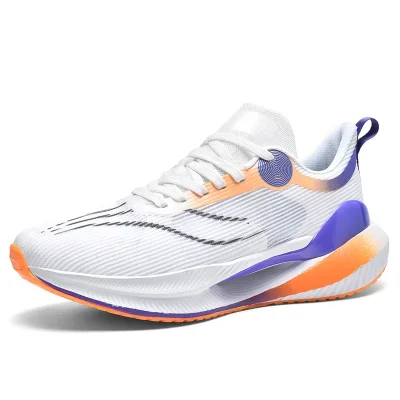The sneaker industry is continuously evolving, driven by advancements in technology, changing consumer preferences, and a growing emphasis on sustainability. Here are some future trends in sneaker materials and designs that are expected to shape the industry:
Future Sneaker Trends:
New Materials
- Sustainable Materials:
- Recycled Plastics: Brands are increasingly using recycled plastics from ocean waste and post-consumer products. Adidas has been a leader with their Parley line, utilizing ocean plastics to create high-performance sneakers.
- Plant-Based Materials: Companies are exploring alternatives like mushroom leather, pineapple fibers (Piñatex), and algae-based foams. These materials are biodegradable and reduce the environmental footprint of sneaker production.
- Biofabricated Materials: Innovations in biotechnology are leading to the creation of lab-grown leather and other biofabricated materials, which offer the same qualities as traditional materials without the environmental impact.
- Smart Textiles:
- Temperature-Regulating Fabrics: Advanced fabrics that adapt to the wearer’s body temperature, providing optimal comfort in varying conditions. Companies are incorporating phase-change materials that absorb and release heat as needed.
- Self-Healing Materials: These materials can repair minor cuts and abrasions on their own, extending the lifespan of sneakers. This technology is still in its infancy but holds promise for the future.
- Lightweight and Durable Composites:
- Carbon Fiber and Kevlar: Used in high-performance sneakers for their strength and light weight. These materials are being refined to improve flexibility and comfort while maintaining durability.
New Designs
- Customization and Personalization:
- On-Demand Manufacturing: Advances in 3D printing and digital manufacturing allow for on-demand production of custom sneakers. Consumers can design their own sneakers, choosing colors, patterns, and even structural elements.
- AI-Driven Designs: Artificial intelligence can analyze consumer preferences and create personalized design suggestions. This technology helps brands offer more tailored products without extensive manual input.
- Minimalist and Functional Aesthetics:
- Streamlined Designs: There is a trend towards minimalist designs that focus on functionality and comfort. These designs often feature clean lines, neutral colors, and subtle branding.
- Multi-Purpose Sneakers: Sneakers that seamlessly transition from athletic to casual wear are becoming popular. These designs prioritize versatility and can be worn in various settings.
- Eco-Friendly Designs:
- Modular Sneakers: Designs that allow for easy repair and replacement of parts, such as soles and uppers, to extend the life of the sneakers. This modular approach reduces waste and encourages sustainability.
- Zero-Waste Production: Techniques like 3D knitting produce sneakers with minimal waste. Brands are also exploring circular production methods, where old sneakers are recycled into new ones.
- Integration of Technology:
- Smart Sneakers: Incorporating technology like fitness trackers, GPS, and Bluetooth connectivity directly into the sneakers. These smart features can track performance metrics, provide navigation, and even adjust fit dynamically.
- Adaptive Fit Technologies: Sneakers with adaptive lacing systems that automatically adjust for optimal fit and support. Nike’s Adapt series is an example of this technology in action.
- Bold and Experimental Designs:
- Unique Silhouettes and Shapes: Designers are pushing the boundaries with unconventional shapes and structures. These avant-garde designs often serve as statement pieces and highlight the creative possibilities within sneaker design.
- Collaboration with Artists and Celebrities: Limited edition releases and collaborations bring fresh and often bold designs to the market. These partnerships leverage the unique styles of artists and celebrities to create highly sought-after sneakers.
Conclusion
The future of sneaker design is set to be exciting and innovative, driven by a blend of sustainability, technology, and personalization. As brands continue to push the boundaries, consumers can expect sneakers that not only perform exceptionally well but also align with their values and lifestyles. Whether through the use of cutting-edge materials or revolutionary design concepts, the next generation of sneakers will undoubtedly redefine the standards of comfort, functionality, and style.


















